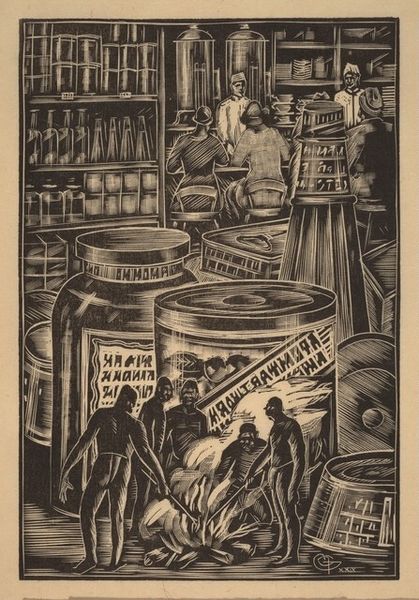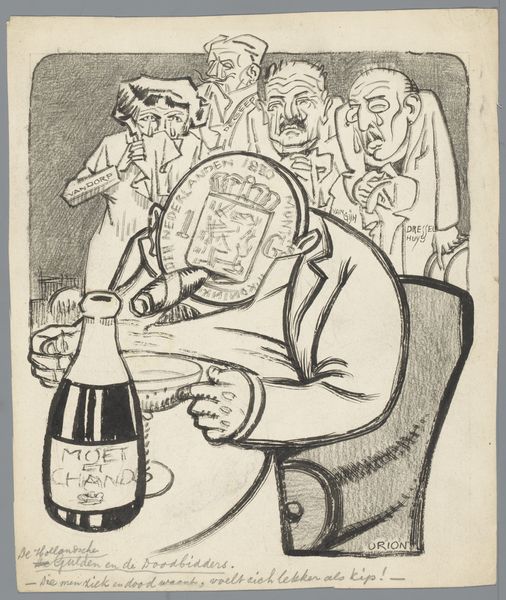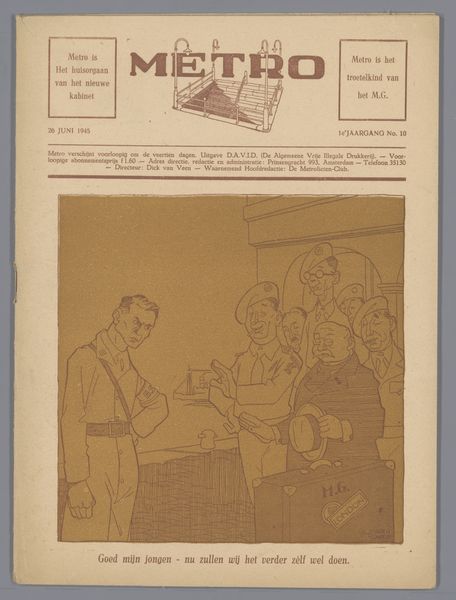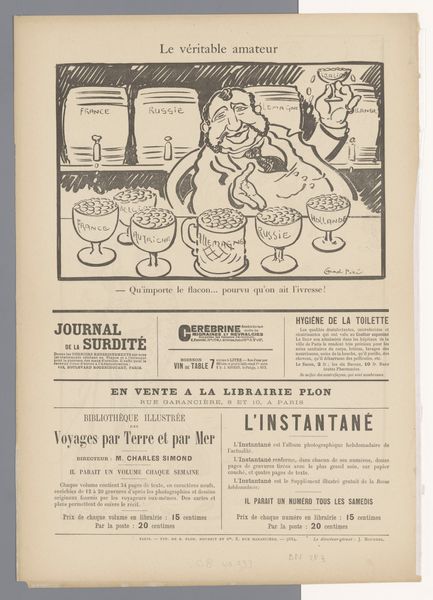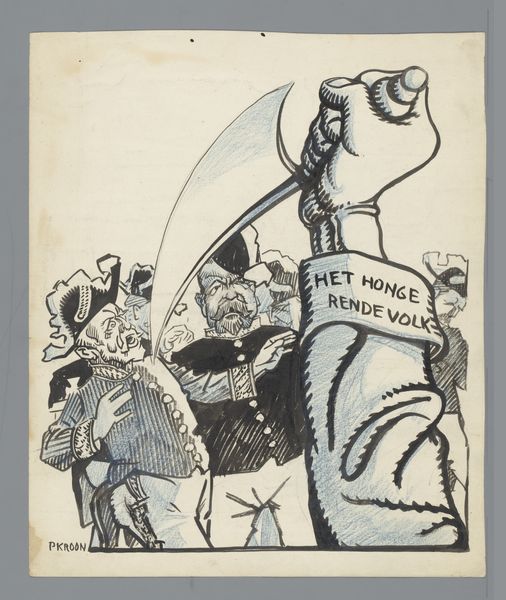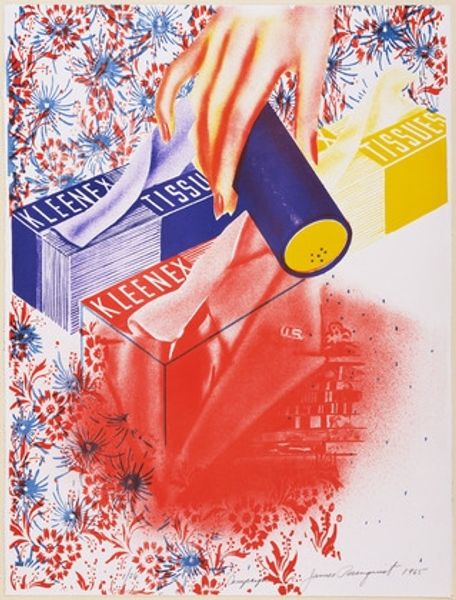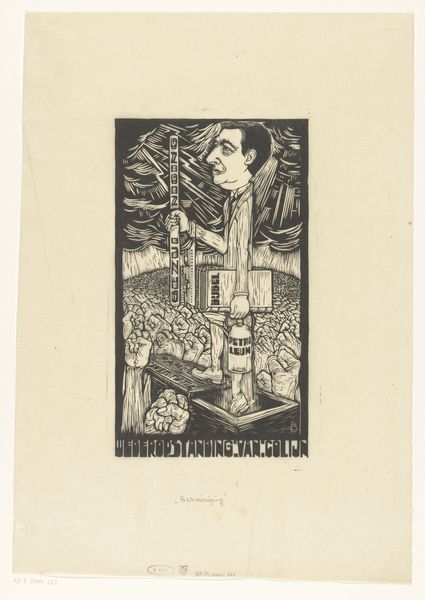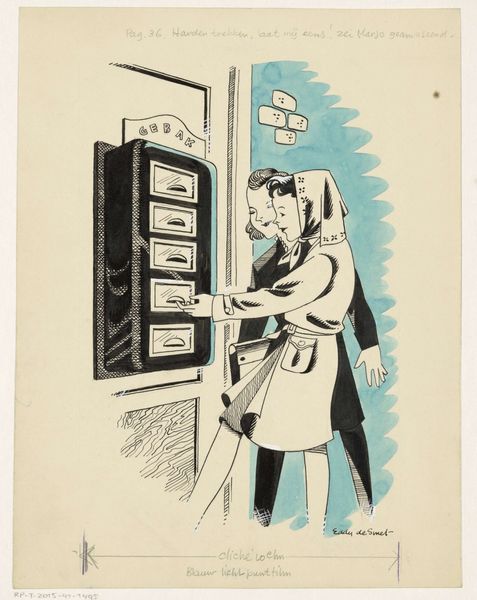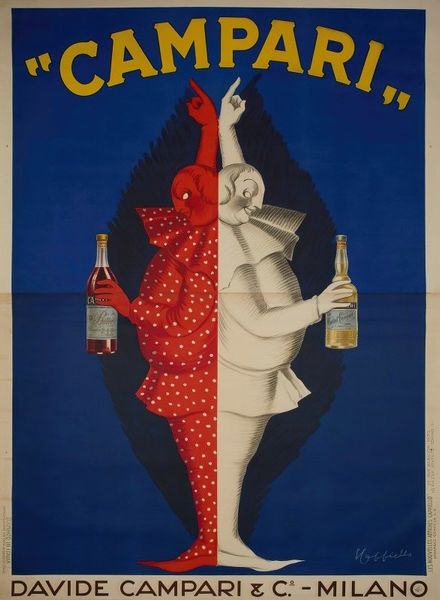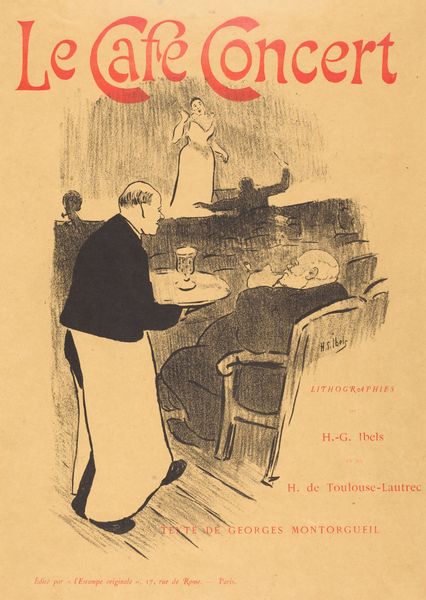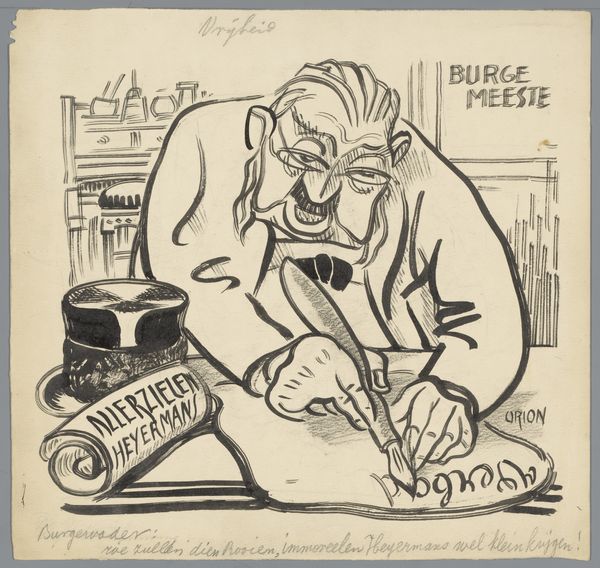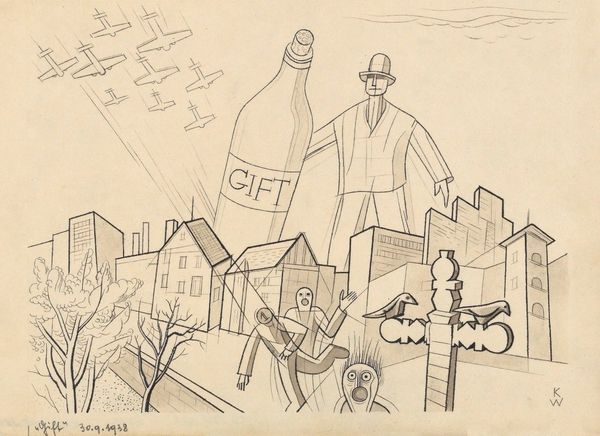
graphic-art, print, photography, poster
#
graphic-art
#
art-nouveau
#
dutch-golden-age
# print
#
photography
#
cityscape
#
poster
Dimensions: height 138 mm, width 91 mm
Copyright: Rijks Museum: Open Domain
Curator: This graphic art print, likely a poster, created sometime between 1918 and 1919, is titled "Philips zonlicht. Kleuren kiezen bij avond." It resides here at the Rijksmuseum. Editor: My initial impression is dominated by a cool, almost monochromatic scheme—varying shades of blue give the image a distinctive but slightly somber mood. Curator: The artwork immediately situates the Philips lightbulb as a sun, doesn’t it? Before widespread electricity, light represented progress, modernity, and a shift away from darkness—quite literally. It symbolizes a transition in society. Editor: Indeed. Compositionally, the bulb radiates outwards, and its circular form mirrors the circularity of the spools and even the artist's palette below, visually tying the piece together, establishing a clear visual hierarchy. The dynamism emerges from these radial lines juxtaposed with the rectilinear shapes. Curator: Notice how textiles, carpets, and what appear to be spools of thread populate the left of the piece, implying warmth and artistry in the home, under a "Philips zonlicht." Light empowers makers to create and design long after daylight hours. Editor: The materiality—likely printed en masse—works almost paradoxically to highlight this idea of the domestic, the unique crafted object illuminated. The texture of the print becomes almost invisible in service of the illusion. The composition leads your eyes on an interesting voyage across different objects and scenes. Curator: In Dutch Golden Age art, light frequently played a crucial role, particularly as a tool for imbuing spiritual meaning into quotidian scenes. Here, electricity is the "spiritual" force enabling the Dutch home in the modern age, still subtly referencing Dutch tradition. Editor: Looking closely at the texture, I would argue, challenges that spiritual depth. We're reminded of mass production through the print's clear form. The bold type also flattens perspective—foregrounding advertisement. The symbolic depth may be overridden in part by sheer visibility, accessibility. Curator: Ultimately, whether for art or for industry, this artwork evokes a sense of transformation, offering a glimpse into how a simple technology reshaped the perception and practice of daily life. Editor: A striking visual encapsulation of modernity in action.
Comments
No comments
Be the first to comment and join the conversation on the ultimate creative platform.
